- Home
- Colm Toibin
The South Page 5
The South Read online
Page 5
“How many drinks did you have with Miguel before I met you this evening?” she asked Michael Graves.
“Five,” he said.
“Five what?”
“Five drinks.”
“What was in them?” she asked.
“Miguel ordered them. Miguel paid for them. I am the innocent party.”
Miguel’s paintings covered the walls. He had been working hard for weeks finishing off paintings that he had previously cast aside, trying to recover paintings he had done years before and beginning new work. These last weeks he had painted all night in a corner of Ramon Rogent’s studio in Puertaferrisa. His eyes glazed over, Katherine noticed, when anything except his exhibition was mentioned. She had watched Michael Graves become Miguel’s friend and adviser, telling him in broken Spanish what he should do with his paintings, how he should frame them, whether he should varnish them and which he should discard.
At some point in every day Michael Graves would turn up. If he came in the late afternoon he would stay drinking and talking as long as there was company; but sometimes he arrived in the morning and disappeared by lunchtime. He lived in a pensión in the Barrio Chino. It was cheap, he said, and he enjoyed the atmosphere. They knew nothing about him: they did not know why he was there, nor how long he intended to stay, nor what he did with his time. His head was full of information from books he had read and people he had met. One day he brought them a pile of his drawings of scenes in the Barrio Chino. All the students were impressed. Ramon Rogent wanted to buy one of them.
That afternoon she took him to one of the bars in the market off the Ramblas. He seemed nervous and overwrought.
“Maybe I shouldn’t have brought those drawings in,” he said.
“Everybody thinks they’re very good,” Katherine replied.
“I have a basic competence, that’s what Rogent liked, the native thing, the thing you’re born with. I don’t know how much I should charge for the drawings. I need the money.”
“He’s not rich.”
“I need to sell more than one of those drawings. I have no money. Otherwise I’d keep them myself.”
“Didn’t you have money before you came here?” she asked.
“I did but I spent it. I need a few commissions.”
“Do you want a loan of money?”
“Yes.”
“How much?”
“This much plus a bit more.” He put his pensión bill on the table. It was not high.
“I can give you that tomorrow,” she said.
“I need it today. They have my passport in the pensión and if they don’t get paid today they’re going to call the police.”
“Let’s go to the bank.”
“I’ll give it back to you,” he said. She was surprised at how calm he was.
* * *
In the week before the exhibition, a small man appeared once a day at Ramon Rogent’s studio and took away the paintings that were ready. Rogent and Miguel called him Jordi Gil. Michael Graves, who disliked him, called him Shylock and did imitations of him rubbing his hands gleefully at the sight of money. Michael went to the British Institute and joined the library in order to borrow The Complete Shakespeare from which he made Katherine read The Merchant of Venice. He cast her in the role of Jessica, Shylock’s daughter. “Sit Jessica,” he would say at any opportunity, “look how the floor of heaven is thick inlaid with patterns of bright gold.”
Sometimes he bored her. She thought his dislike of Jordi Gil was irrational. She returned to her grammar book and her pensión window, to her walks around the Barrio Gótico, her solitary meals in the restaurant in Hotel Colón, her visits to Plaza San Felipe Neri.
The painting classes with Ramon Rogent gave her a focus. She went for a meal or a drink with anyone who was free; but Miguel was preoccupied with his exhibition, he was not preoccupied with her.
The exhibition was important. There would be a big opening in the gallery with colour reproductions in the catalogue. The prices would be high, the gallery was good. Jordi Gil had given Miguel an advance and if enough paintings were sold Miguel said he wanted to go and live in the Pyrenees. She was lying in bed one morning in the room he kept in a friend’s flat in Gracia. She thought he had gone out for the day. She lay in the darkened room worried about being pregnant: they had made love during the night without using a contraceptive. They had taken the risk. She would soon have to make a decision about Miguel.
He came back into the room and stood at the foot of the bed with his hands on the iron rail. “Quieres venir conmigo para vivir en un pueblo del pirineo?” She translated it to herself in a whisper. Do you want to come and live with me in a village in the Pyrenees? She curled up in the bed for a moment and turned her head towards the wall. She let the silence continue. After a while she sat up in bed and looked at him. His hands still clutched the rail.
“Si,” she said. His lip curled as though he were amused. He went out. She reminded herself that she could leave at any time she wanted.
* * *
Ramon Rogent taught her to use black for delineation as though the paint-brush were a pencil. He taught her to draw the painting first using the black oil paint. From then on the problems were weight and texture. He taught her that light was a form of weight. He showed her how Picasso made painting seem like sculpture, giving each colour a weight in its application, as though it were mass. He showed her reproductions of Matisse and Dufy and illustrated how they had used black paint to draw the lines and then colour to fix the weight and the texture. She came back every day and worked on this.
Rogent was working on a big painting called The Rocking Chair, using a model in an elaborate floral dress sitting in a rocking chair with a window open on to a balcony. He showed her the sketches he had made for the painting, how he had planned the same pink to appear on the face and arms of the woman, on a building in the background outside and as dots on the woman’s dress. But the force of the painting would arise from the use of black to make lines and shadows. Over and over Rogent worked on the black. He taught her how to use black.
Michael Graves remained uneasy about what she was learning. She should learn to draw with a pencil, he maintained, not to make fake marks with black oil and fake textures with fake colours. He took his sketch book one day when they went to Tibidabo and she spent the afternoon watching him draw Barcelona down below with the sea beyond. He drew with a fluency she had never imagined possible. He was a much better draughtsman than either Miguel or Rogent.
“Where did you learn to draw like that?”
“I always knew. I just practised it and developed it. I worked at it. You should work at it too, instead of learning how to put daubs on canvas.”
“What did you do before you came here?”
“Very little. I was a teacher. I worked in a hospital.”
“What part of Enniscorthy are you from?” She had tried to ask him this before but he had evaded the question. This time he answered freely.
“Do you know Frank Roche’s house, Slaney Lodge?”
“Yes, of course I do.”
“There are four houses in a terrace just opposite that. I was born in one of those.”
“They’re very small.”
“Yes, to you they would be very small.” He looked at her with his big green eyes. She noted the mockery, the bitterness, the irony. She lit a cigarette.
“Why don’t you smoke?” she asked him.
“My lungs,” he said.
“What’s wrong with your lungs?”
“They’re in bad shape.”
“Why?”
“TB,” he said.
“How long did you have TB?”
“Years.”
“Were you in hospital?”
“I was in hospital.”
“For how long?”
“Have you ever read a book called The Magic Mountain?” he asked.
“No,” she said.
“It was like The Magic Mountain except more people di
ed. Almost everybody died. I didn’t die.”
He held her hand for a moment and moved closer to where she sat on the grass. He rested his head on her shoulder. “How long did you have TB?” she asked. He didn’t answer. Gently he put his hand on her breast and held it there.
“Michael, Michael,” she whispered. He didn’t move.
“I want to go,” she said. “Please don’t.” She pulled his hand back and held it. They walked in silence to the tram in the warm afternoon.
* * *
She expected to see nothing familiar in this strange city so that when she glanced into the gallery and saw Miguel’s paintings hung on the walls she was shocked. It was like visiting home for an instant, or like seeing someone’s handwriting in a new context. She stopped in the street and it was a full instant before she knew what she was looking at. She had forgotten the frenetic preparations for the exhibition.
When she went in she was disappointed as she knew she would be. She had liked only the academic work she had seen of Miguel’s—the still lifes, the portraits. This, she felt, was too surrealist: there were too many images, too many statements. Prison bars turned into snakes, men’s arms turned into rifles; there were coffins.
She had heard Miguel’s arguments with Rogent about painting and she had observed the difference between them. Rogent talked about colour and form, he talked about beauty, he spoke about using paint almost for its own sake. Miguel believed that paintings should state something, should tell the truth, should be assertive. Miguel admired Goya for his Third of May; Ramon admired Goya for his court portraits as well. Their views were so clear-cut and far apart that Katherine had no difficulty understanding them. Nor had she any difficulty siding with Ramon Rogent. She felt this sharply as she moved about the gallery.
* * *
There had been tension all that week over Miguel’s portrait of Franco which he had begun several years before. He disappeared for a day with the canvas and when he came back to Rogent’s studio he wouldn’t allow anyone to see it. He cleared a space in the corner and worked all night, making sure that no one could catch a glimpse of what he was doing. Katherine understood the tension, knew why the students were standing around and why Rogent was so nervous. Miguel was painting Franco.
Rogent’s wife Montserrat was in the studio that night and tried to explain the problem to Katherine further, but she couldn’t understand what Montserrat was saying; she just nodded. Eventually, Rosa, who seemed to work as Rogent’s assistant, came back and Katherine was able to ask her what the problem was.
“His painting wishes to insult the Franco,” Rosa replied.
“Is that why everyone is so worried?” she asked.
“If the police find it he will be arrested.”
“Miguel?”
“Yes, and if the police find it here in the studio of Rogent, they will arrest Rogent also.”
“But is the painting not for the exhibition?” she asked.
“Miguel want it for the exhibition but . . .” Rosa made a sign as if to cut her throat.
In the morning Rogent was still there. A blonde stubble stood out on his thin face. Montserrat had gone, but Michael Graves had turned up and was standing beside Miguel at the easel. Only Michael Graves had been allowed to look at the painting. When he saw her he came running down the studio. “He’s a genius, your husband. I know he’s not your husband, but he’s a genius.”
Rogent wanted to know what was going on. He seemed flustered. Michael Graves shrugged his shoulders as though he couldn’t understand. He turned to Katherine. “The painting, Miguel told me to tell you, is called The Death of Franco and it shows Franco dead in a coffin. There’s a huge rat eating at him and bits of him are being eaten by worms. It’s a great bloody painting. It’s terrific.”
“But he can’t do that,” she said.
“Why can’t he? Of course he can.”
“He’ll be arrested.”
“Who’ll arrest him?”
“The police.”
“I’ll arrest him if he doesn’t finish it,” Michael said. “He’s a genius, your husband.”
“This is Spain, there will be problems,” she said.
“Let there be problems, it’s about time there were problems,” he replied.
* * *
When Miguel was too tired to keep working, Michael Graves sat like a lean greyhound guarding the painting. His green eyes fixed on anyone who came into the studio as though he would bite them if they came close. He sat on the chair the wrong way around, his arms resting on the wooden back. When Miguel came back they talked for a while. Michael Graves irritated Katherine; she had no idea how he and Miguel managed to communicate: Miguel spoke no English and Michael’s Spanish was rudimentary. They were still talking when Ramon Rogent came back into the studio accompanied by Jordi Gil. Gil immediately shouted something down at Miguel. It sounded like an order; it was in Catalan. Miguel walked up towards him, Katherine noticed that his fists were clenched. He began to shout. Rogent said nothing. He was pale.
Miguel came so close to him that Gil had to move back a few steps. He pointed his finger at him and poked him in the chest. They both shouted in Catalan. Gil kept pointing to the painting at the top of the room. Katherine went over to Rosa and asked her what they were saying.
“Mr. Gil say that he not include this painting in the exhibition. Miguel say that this painting must be included,” she said.
Michael Graves came over to Rosa. “How do you say ‘coward’?” he asked.
“Cobarde,” she said.
“Cobarde, sounds logical,” he said. He went over to Gil.
“Cobarde,” he said.
“Cobarde,” he repeated. He hunched down so that he stood as small as Gil and put his face up against his.
“Cobarde,” he said again.
Gil’s face was red; he looked as if he were going to burst. He spoke quietly to Rogent and then went to the door. Eventually, Miguel and Rogent joined Gil and the three of them went out into the street.
Michael Graves took up his position as guard of the painting again, and Rosa sat in front of him with a pencil and sketch pad and began to draw him guarding the painting. She told them that Rogent was worried that one of the students would go to the police and inform on Miguel. She said it was impossible to tell which side people were on, even Catalan people. Michael Graves said he was going to the police if the painting wasn’t in the exhibition. Rosa used different pencils in the sketch to get different effects. Michael Graves seemed pleased about being sketched and sat as motionless as he could, guarding the painting of Franco. “You’ll have to stop behaving like a child,” Katherine said to him.
When Katherine went out to look for them they were not in the gallery nor in any of the cafés along the street. She went into the bar in the Plaza del Pino to have a beer and a sandwich and she found the three of them sitting there. Gil was writing out a list of names. At intervals one of them would call out a name and they would all laugh—sometimes this name would be added to the list, other times not.
Miguel explained to her that he had reached a compromise with Gil. He had agreed not to include the painting in the exhibition if Gil agreed to pay for a separate party the night before the opening at which the painting would be on show. They were preparing a list of those who were to be invited and it was important that no one on the list was a fascist, or a spy, Miguel said.
* * *
Most of those invited, however, did not turn up. When Gil made a speech, the small audience laughed at the constant interjections by Michael Graves. The painting was unveiled, bottles of champagne were opened and Katherine felt that people were disappointed by the painting, that it did not seem shocking to the few students and artists there.
Jordi Gil filled everyone’s glass with champagne. Katherine went over and examined the painting. The face was not right; she would not have recognised the man as Franco, that was the first failure. The sense, however, of something rotting was, she felt, good. The
rat was frightening; the tail lingered over the face as the teeth nibbled at the shoulder. Rogent saw her looking at it and came over. He asked her if she liked it. When she said no, she did not, he agreed with her.
She told him she enjoyed the classes and laughed when he said she was his best student. He told her she should try and be serious about it and work hard. They both glanced over at Michael Graves who had his arms around Jordi Gil and was singing a song. Katherine asked Rogent what he thought of Michael Graves’s drawings.
“His drawings are marvellous,” he said. Rogent looked over at him as he sang. “But he’s more interested in life than in painting.” Katherine noticed Miguel watching her from the other side of the room; she smiled at him and he winked back.
* * *
Enough paintings sold at the real opening the following night for Jordi Gil to be satisfied, for the row to be forgotten. Katherine stood with Michael Graves as the crowd began to thin out. Miguel came over and told them that Gil had given him more money and he had booked a long table in Barceloneta.
The night was warm. They drove in a taxi down to the statue of Columbus from where they could see the ships in the port and then turned left towards the station and then down by the warehouses to Barceloneta. Miguel ordered the taxi to stop before they arrived at the restaurant and they went into a bar on the corner of one of the narrow streets.
Miguel and Michael Graves ordered absenta as an aperitif; Katherine had a beer. This was the second night in a row spent drinking and Katherine did not think she could drink much longer. She had hardly touched her beer by the time Michael Graves ordered another round of drinks. She told Michael Graves to stop drinking so fast. Miguel told her to stop talking in English, since he could not understand. Katherine told him in Spanish what she had said and he told her it was her fault, she was drinking too slowly.
In the restaurant the others were waiting. They ordered a paella and white wine. Michael Graves said he wanted red wine; Miguel agreed, said he wanted red wine as well. After the meal they had several brandies each and stayed on at the table when the others left, moving from the restaurant back to the bar they had visited earlier. Katherine was, by now, enjoying the drink but Miguel and Michael Graves had gone too far in drunkenness for her to catch up. By midnight the bar was closing up and they had to leave.

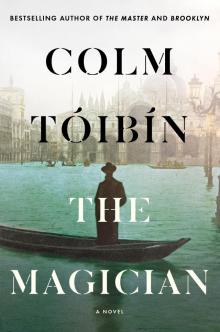 The Magician
The Magician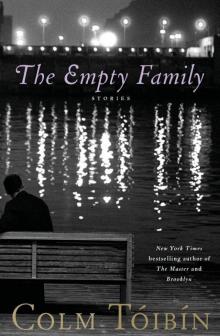 The Empty Family (v5)
The Empty Family (v5)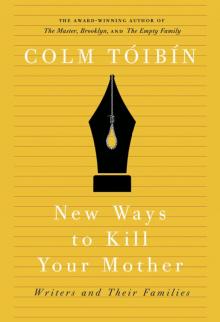 New Ways to Kill Your Mother
New Ways to Kill Your Mother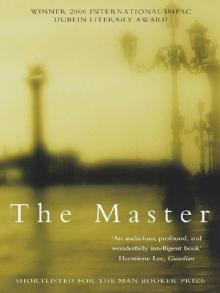 The Master
The Master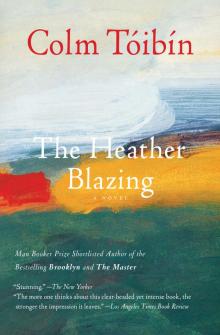 The Heather Blazing
The Heather Blazing Brooklyn
Brooklyn The Blackwater Lightship
The Blackwater Lightship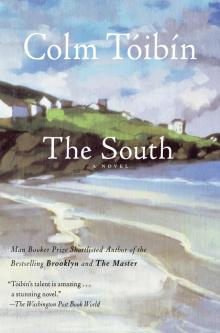 The South
The South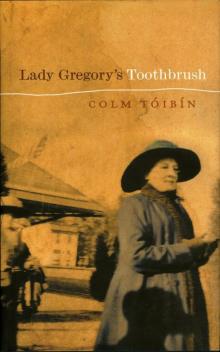 Lady Gregory's Toothbrush
Lady Gregory's Toothbrush House of Names
House of Names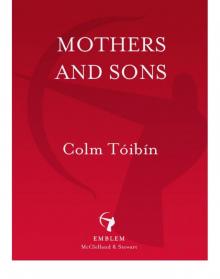 Mothers and Sons
Mothers and Sons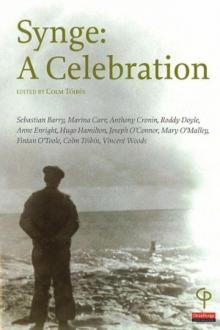 Synge
Synge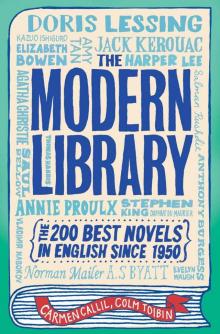 The Modern Library
The Modern Library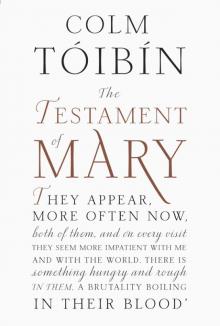 The Testament of Mary
The Testament of Mary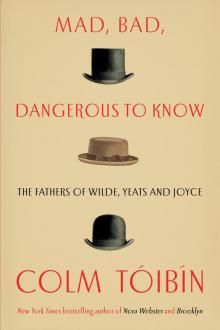 Mad, Bad, Dangerous to Know
Mad, Bad, Dangerous to Know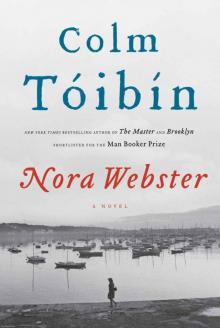 Nora Webster: A Novel
Nora Webster: A Novel